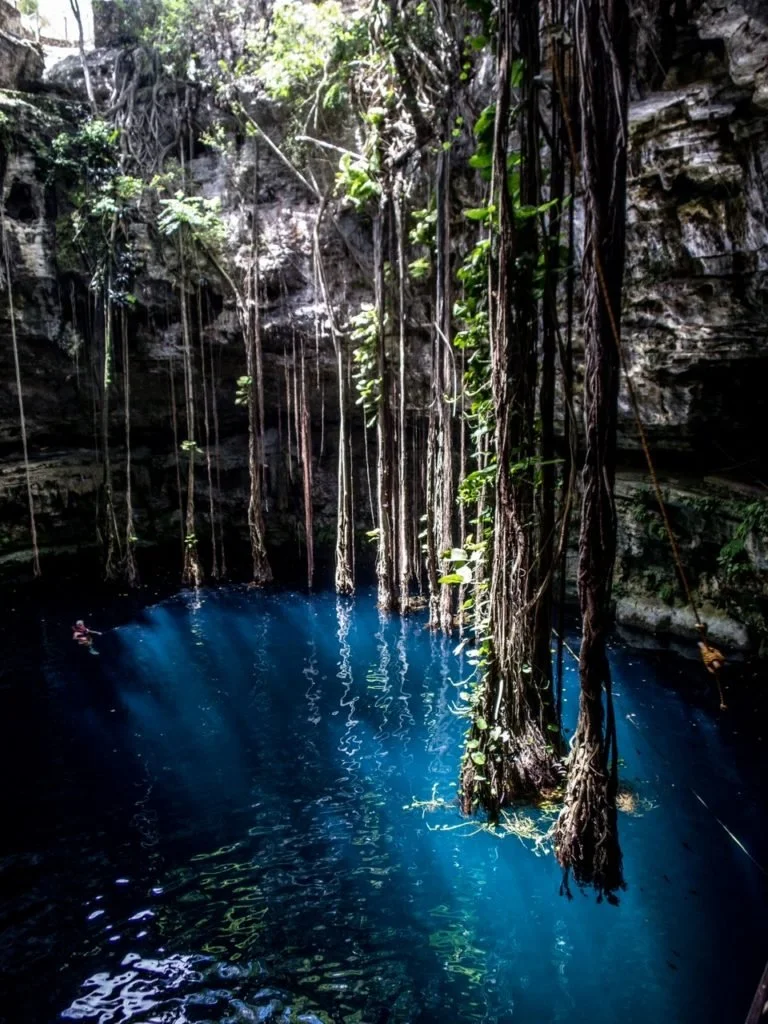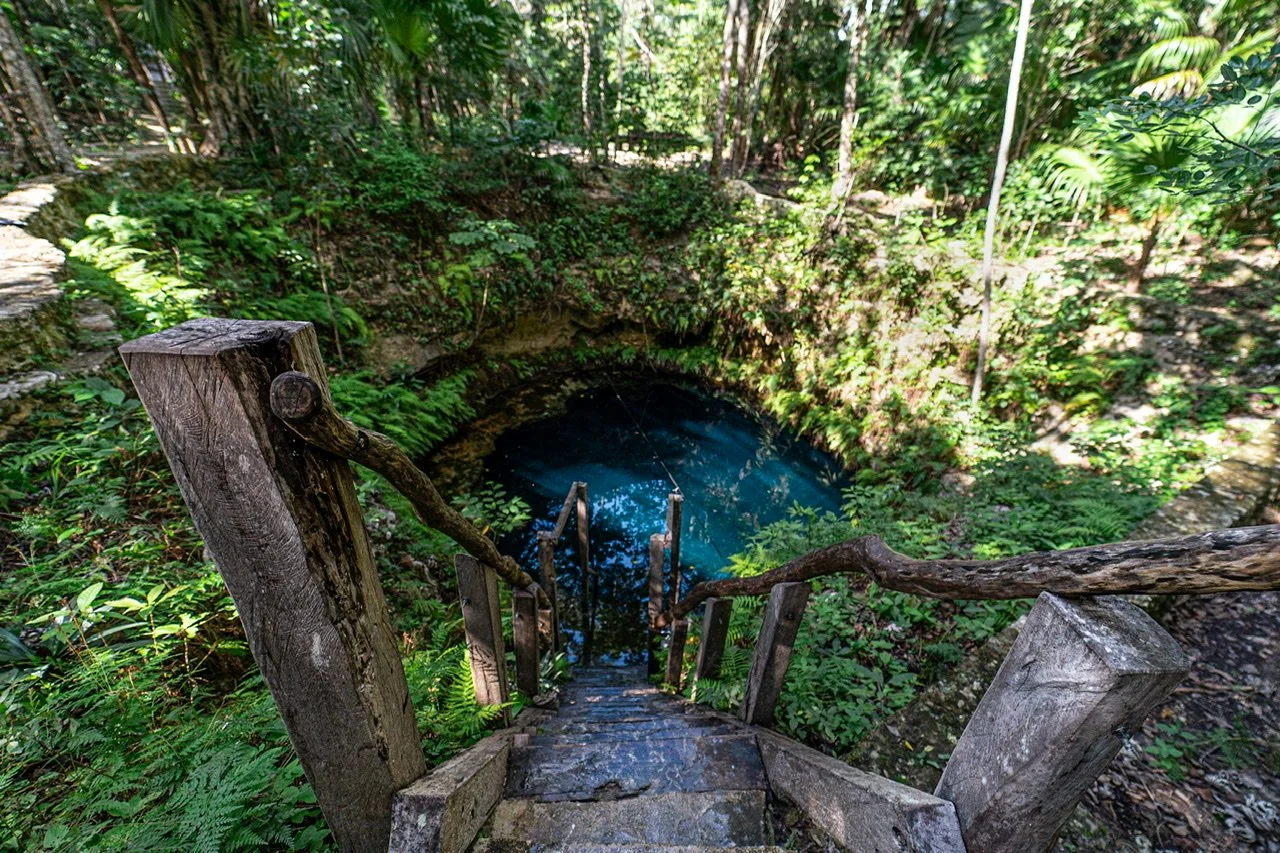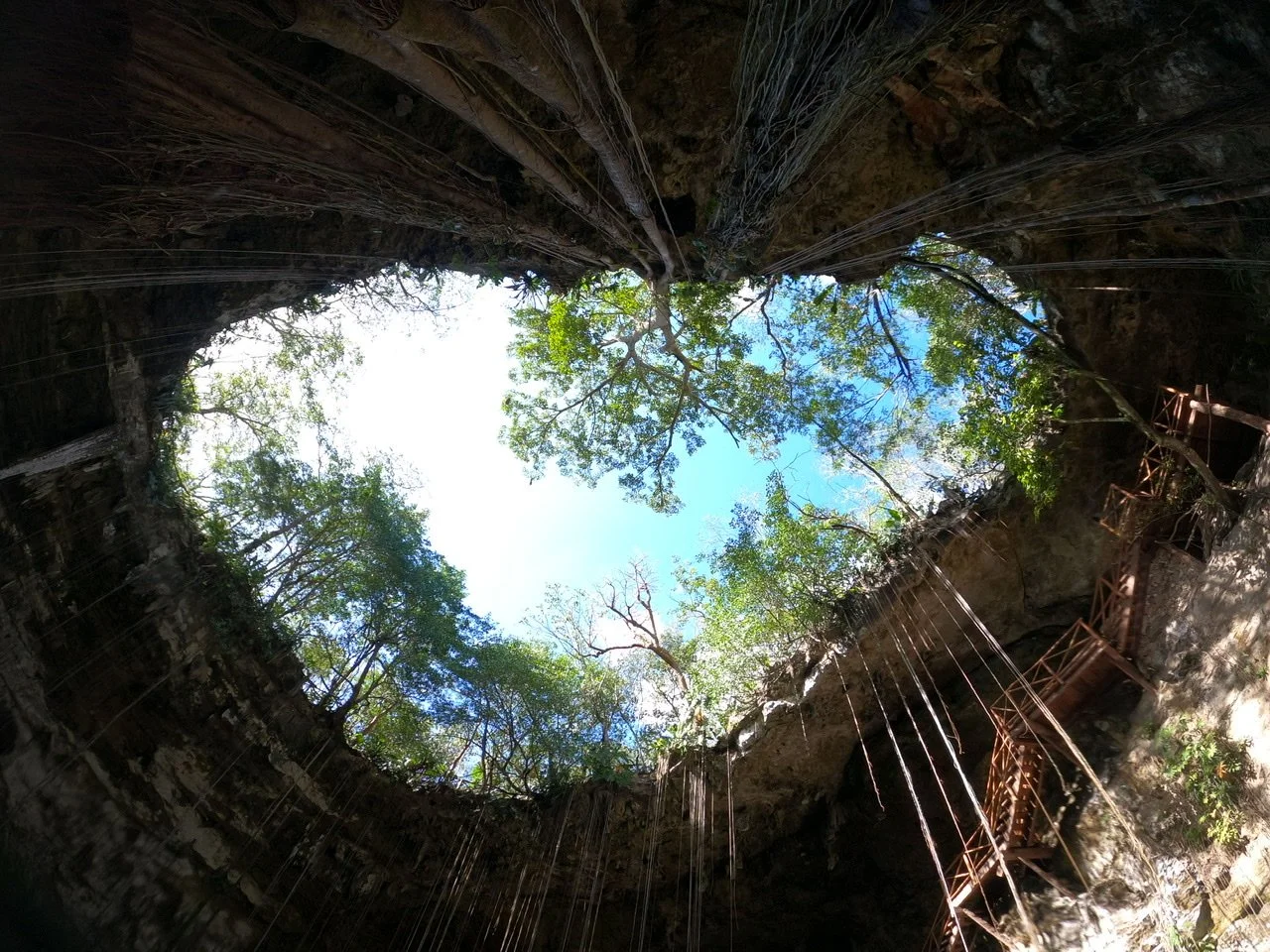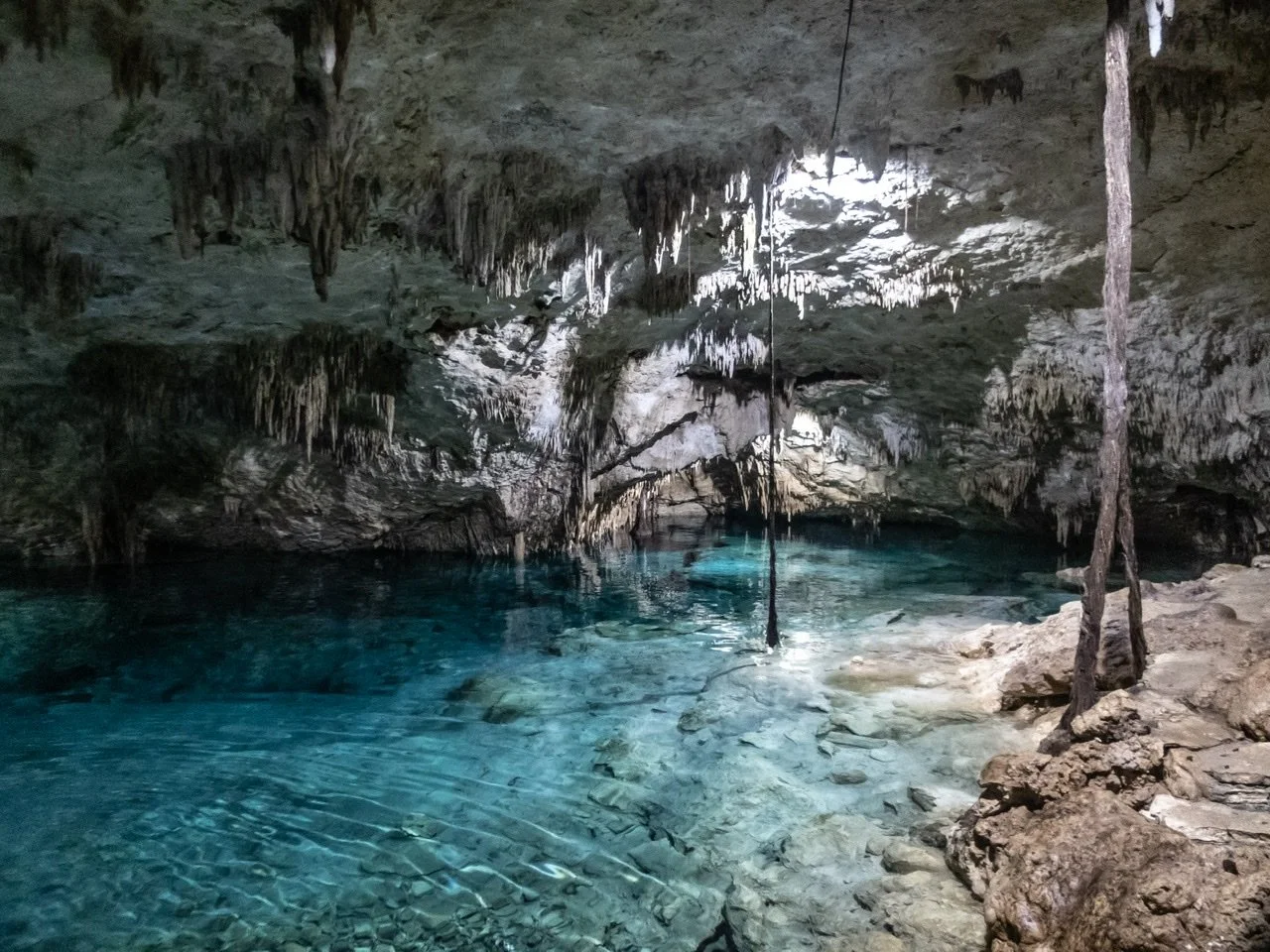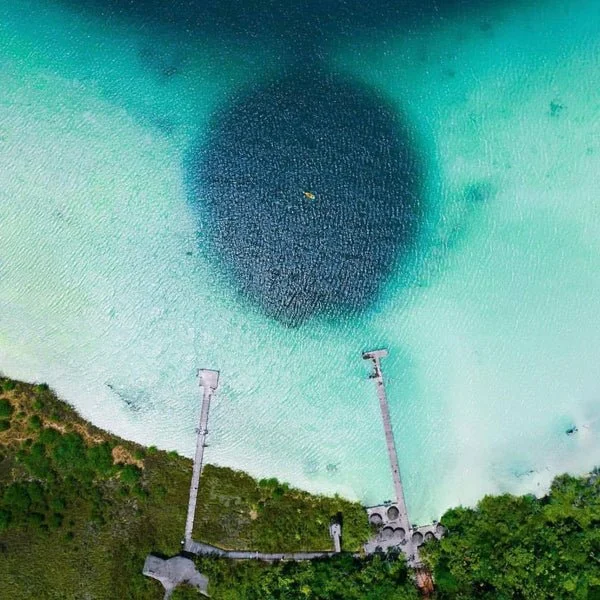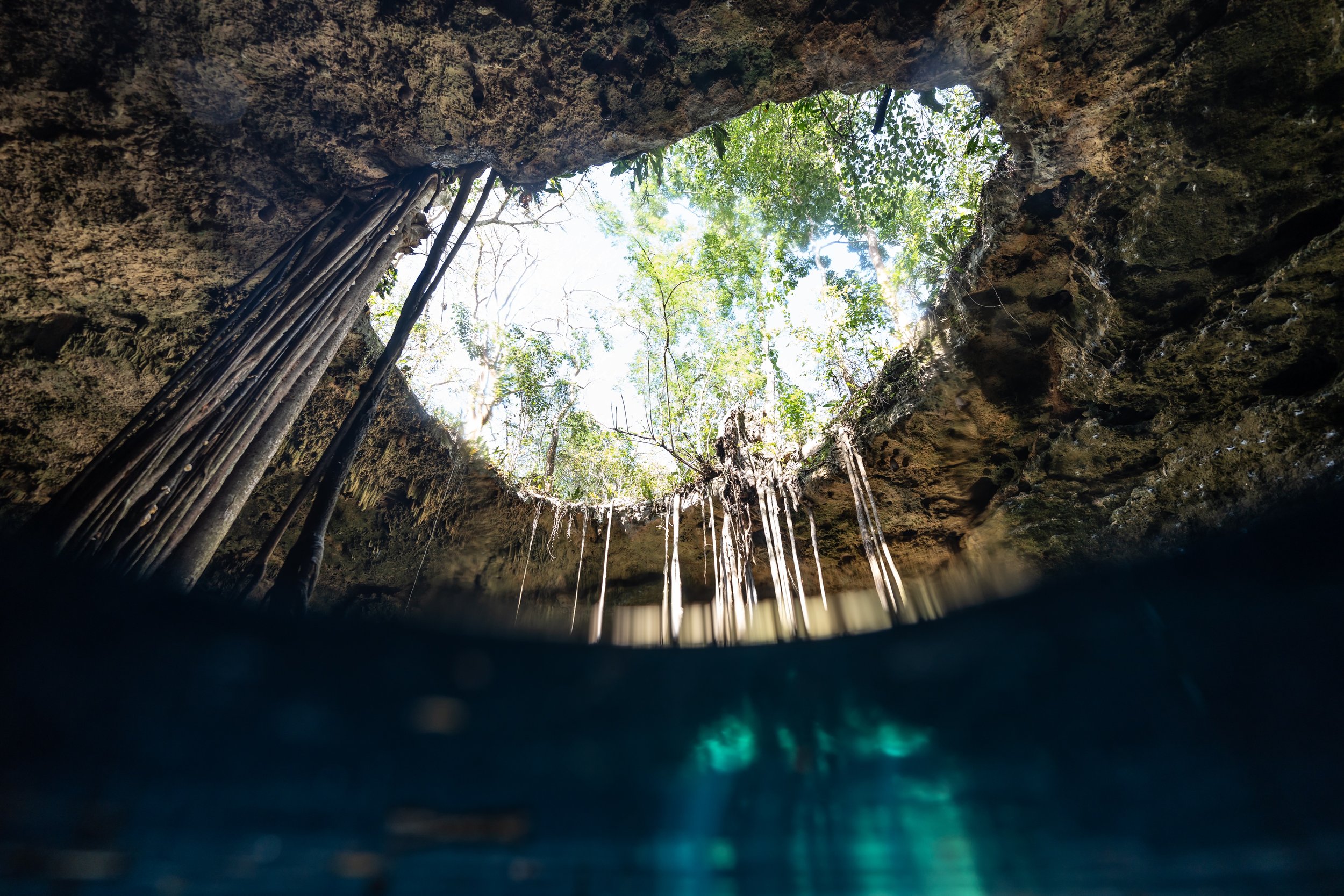
The Cenotes of Mexico
The Yucatan Peninsula in Mexico got the highest concentration of Cenotes than anywhere in the world!
The Cenotes (from Mayan “DZONOT”) inspire civilization and people since the dawn of time. Once revered by the ancient Mayans as sacred wells, they now inspire a new generation of adventurer, divers and freedivers from all over the world!
The Yucatan Peninsula in Mexico got the highest concentration of Cenotes than anywhere in the world, with more than 6000 all over the peninsula, in a variety of size and shape.
It is characterized by its mainly limestone bedrock. Limestone is a soluble type of rock, and if exposed to percolating water for long periods of time, say millennia, limestone will eventually dissolve. In the resulting karst landscape, the porous bedrock does not allow for fresh water to accumulate above ground in forms of rivers and lakes. Instead, drainage occurs subsurface as rain water filters through the perforated rock and collects underground where the process of erosion continues.
At times, the surrounding bedrock destabilizes so much that it collapses to reveal the cave underneath, marking the birth of a cenote.
Different types of cenotes exist. Some are deep water-filled shafts with strictly vertical walls, while some are shallow but wide. Other cenotes are semi-open with part of the water surface hidden from view in a cavern. Entirely cavernous cenotes are another type and can be reached only through holes in the ceiling or by walking through tunnels.
The Yucatán Peninsula contains a vast coastal aquifer system. The infiltrating low density rainwater floats on top of higher density saline water, intruding from the coastal margins.
The whole aquifer is therefore land-locked but connected to an ocean. The density interface between the fresh and saline waters is a Halocline, which means a sharp change in salt concentration over a small change in depth. Mixing of the fresh and saline water results in a blurry swirling effect caused by refraction between the different densities of fresh and saline waters. This halocline is the provide in some cenotes a spectacular effect of a “cloud”, a trapped sulfur layer in between freshwater on top and saltwater below.
With the help of modern technology, cenotes have been linked to the extinction of the dinosaurs. Aerial mapping of the Yucatec sinkholes revealed a circular pattern through the jungle. Further investigation confirmed that this higher-density ring of cenotes marks out the rim of a colossal meteorite, the Chicxulub crater, which has been dated to the boundary between the age of Cretaceous and the age of Paleogene, some 66 million years ago.
Long before the advent of modern technology, the inhabitants of the Yucatan understood the critical importance of the local freshwater sinkholes. The ancient Maya, one of the most advanced indigenous civilizations of the Mesoamerican continent, migrated to the Yucatan Peninsula between 500BC and 250AD.
In a region devoid of rivers or lakes, such as the Yucatan, cenotes provided year-round access to fresh water. Their sheer number and ability to sustain large human settlements formed the foundation on which a sophisticated society could be built. All of the biggest cities that the Maya built between 300AD and 900AD, such as Chichen Itza and Uxmal, were erected in the vicinity of several cenotes. The city of Mayapan, situated 100 kilometers west of Chichen Itza, had some 40 cenotes within its city walls to supply up to 17,000 inhabitants.
Cenotes were so vitally important for the survival of the local population that they were deeply embedded into the religious belief system. The Maya believed cenotes to be a gateway to Xibalba, the underworld, and the god of rain, Chaac, was believed to live at the bottom of these sacred wells. The Maya performed rituals and ceremonies at sacred cenotes to ask for rain and good crops.
The most famous of these is the Sacred Cenote near the ancient Maya city of Chichen Itza, located in the northwest of the Yucatan Peninsula. From its depths, archaeologists have recovered artifacts of gold, jade, and pottery as well as human remains whose injuries are consistent with human sacrifice.
While human sacrifices no longer play a role in present-day Maya culture, some descendants of the ancient Maya still pay their respects to the mythical inhabitants of cenotes.
Sources:
www.theculturetrip.com
www.wikipedia.org

